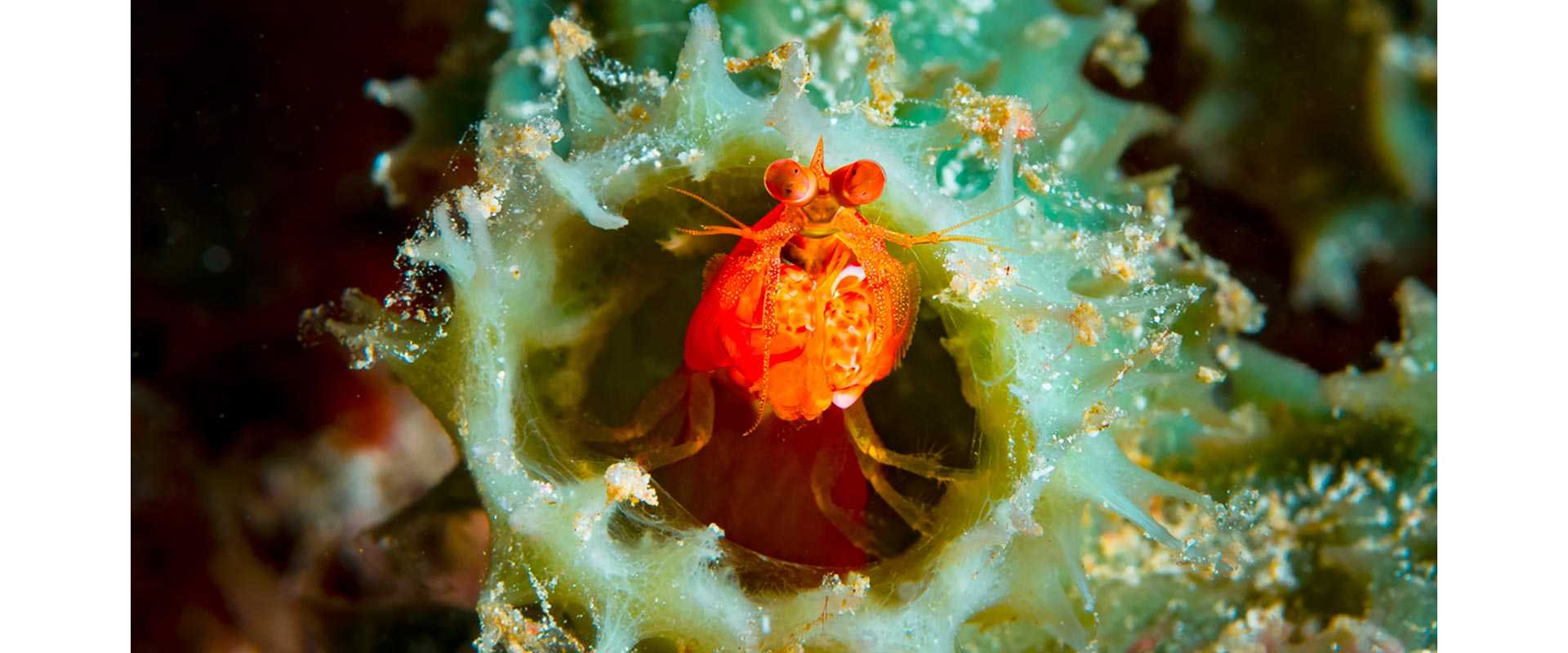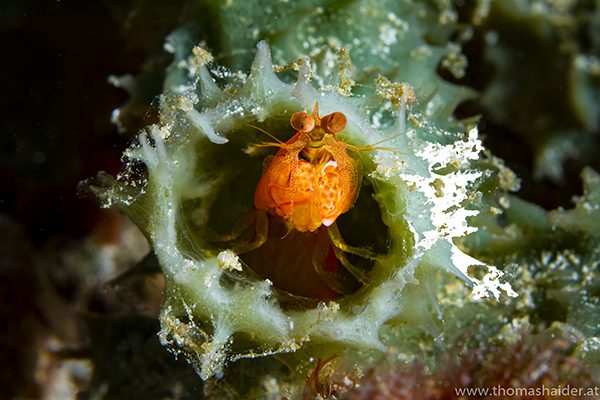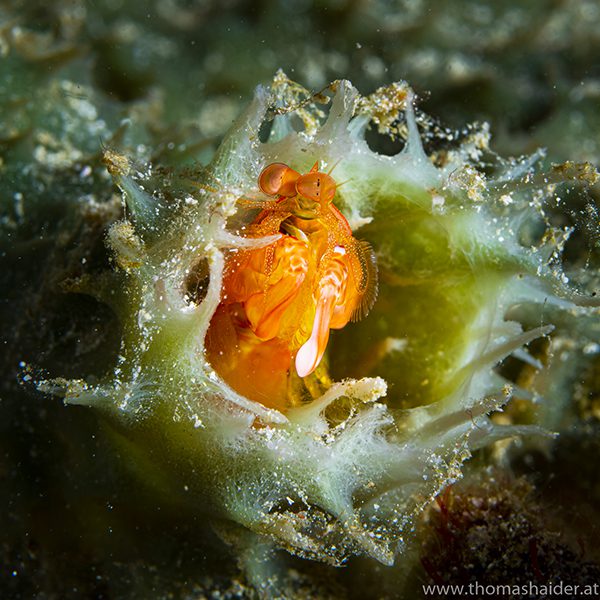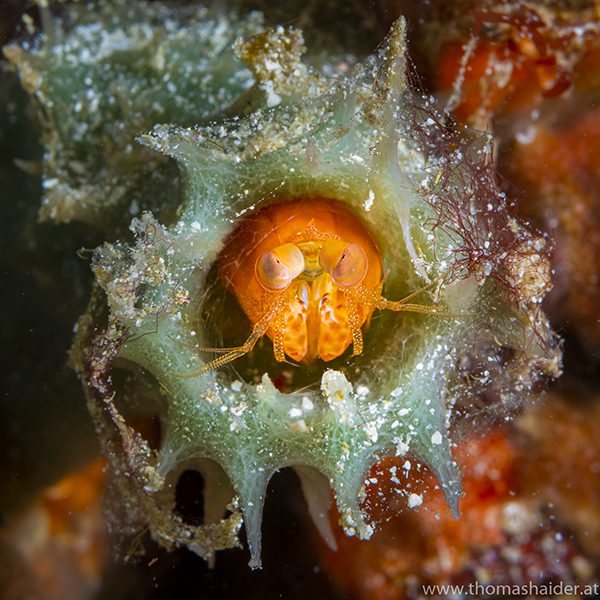0 Comment
Rare Mantis Shrimp sighted in Raja Ampat! by Dr. Thomas Haider
Dr. Haider’s most recent email began with these words: “During these hard times maybe it would be nice to show the world the rare wonders of the Birds Head Seascape!!!! So I thought, this is maybe interesting for your website and social media channels!!!”
He recently found this rare orange smooth mantis shrimp Gonodactylaceus glabrous in a tube sponge (Callyspongia aerizusa) on a new dive site behind Pef island (near Raja4Divers resort) at a depth of 25 meterson a sand slope. Having never seen a photograph of this animal from West Papua he sent his images to Dr. Mark Erdmann, one of the world’s leading researchers of Stomatopods or Mantis Shrimps. (Interestingly, Dr. Erdmann, Conservation International’s VP and head of their Asia-Pacific Marine Programs happens to have done his PhD research on Stomatopods. He is also our boss and one of the people most responsible for the conservation of the BHS.)
Here’s Mark’s response to Thomas: “Thanks for this! That is indeed a gorgeous shot of G. glabrous – amazing! Best shot I’ve ever seen of that species in fact. I did record the species from Raja Ampat during my fieldwork on mantis shrimp there in late 2001 – but have never seen it since, and definitely never photographed it live. Very cool – thanks!” Here are Mark’s general comments on this find; This rare species of a beautiful orange mantis shrimp with smashing claws (Gonodactylaceus glabrous) has only been recorded in the Bird`s Head Seascape once and that was 20 years ago. Underwater Photographer Thomas Haider himself found this rare species now again and was also able to photograph it for the first time on a new diving spot behind Pef island. Not much is known of this species in the wild, but it is generally quite small between 40-50mm (1.5 to 2 inches). This one was inhabiting a tube sponge (Callyspongia aerizusa) at a depth of 25 meters. For size comparison, the entrance diameter of the tube sponge is approx. 2-3cm (about an inch) so the diameter of the head part of the mantis is just approx. 10mm (less than 1/2 inch) !!!!!!!!!!!!!!!!!!.
Information regarding this small mantis is very limited. And so far there has been no specimen collected in West Papua. Historically, since 1886, the shrimp has been described from Japan, Vietnam, Philippines and West Australia. Anecdotal data reveals the shrimp might achieve a maximum length of 80mm (3 inches). Thomas estimates that his specimen had a total length between 40-50mm (1.5-2 inches).
Thomas notes that in his pictures; “you can see two different openings of the tube sponge. The Mantis looked once out of one opening and then out of the other opening. He was always changing the position which was actually quite funny to watch!!! The larger inner diameter of the sponge tube was about 30mm (just over an inch), the smaller one about 20mm (under an inch). This means that the diameter of the head part of the Mantis is only about 10mm (less than 1/2 inch)!!!!!!”
Wow what a find. Thanks for sharing this with us Thomas!
Dr. Thomas Haider is a MD and MSc Tox based in Vienna, Austria and a frequent contributor to the BHS website. He is also a member of SubAl’s Pro Team.








































